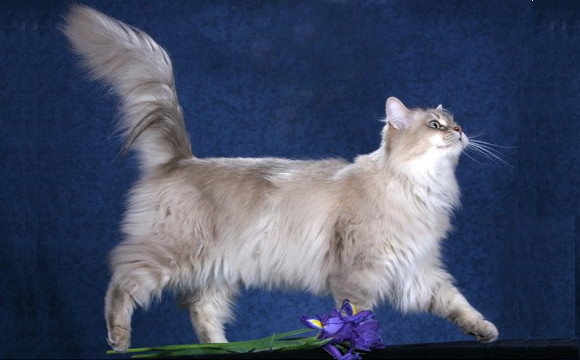Introduction
The Tiffany Chantilly cat, known for its elegant appearance and moderate temperament, has a rich history and distinct characteristics. This guide delves into the breed’s origin, physical traits, personality, and care requirements, offering a complete overview for current and potential owners.
History of the Tiffany Chantilly Cat
Origins and Early Development
The journey of the Tiffany Chantilly cat began in 1967 when Jennie Robinson purchased two cats, Thomas and Shirley of Neotype, from a pet shop in White Plains, New York. Registered as “Sable Foreign Longhairs” by the American Cat Association (ACA), these cats laid the foundation for the breed. Their first litter was born in May 1969, leading to a lineage of around 60 kittens over the next seven years.
Breeding and Recognition
Initially, breeders speculated a connection between the Tiffany’s chocolate color and the Burmese breed due to similar recessive traits. However, this theory was never proven. Jennie Robinson’s breeding efforts were succeeded by Sigyn Lund in the 1970s. Lund, a Burmese breeder, continued the development of the Tiffany until the mid-1980s. The breed’s name was changed to Tiffany, inspired by the classy and elegant Tiffany Theatre.
Despite initial confusion and misclassification as a longhaired Burmese, significant strides were made to clarify and preserve the breed’s unique identity. Tracy Oraas and Jan DeRegt played pivotal roles in revitalizing the breed in the late 1980s, establishing its distinct lineage and renaming it to avoid confusion with the British Tiffanie.
Physical Characteristics
Appearance
The Tiffany Chantilly cat boasts a semi-foreign body type and a full semi-long coat. The coat is silky and smooth, with minimal undercoat, making grooming relatively easy. The neck ruff, ear furnishings, and tail plume add to its elegant appearance. These cats are slow to mature, often reaching their full glory at around two years of age.
Color and Eye Features
Originally found only in chocolate, the breed now comes in various colors and patterns. Their eye color, typically gold with a green halo, intensifies with age, enhancing their striking look.
Personality and Temperament
Moderate Temperament
Tiffany Chantilly cats are known for their balanced temperament—not too active, yet not too docile. They have soft, sweet voices and enjoy engaging in conversation with their owners, often chirping like pigeons.
Affectionate Companions
These cats form strong bonds with one or two family members, becoming devoted and loving companions. They are polite in seeking attention, following their favorite humans without being overly demanding. Despite their need for companionship, they do not fare well with strangers and can become depressed if left alone for extended periods.
Care and Maintenance
Grooming Needs
With a silky coat lacking an undercoat, Tiffany Chantilly cats require minimal grooming. Regular brushing will help maintain their coat’s sheen and prevent matting. Their ear furnishings and neck ruff should also be gently groomed to keep them looking their best.
Health Considerations
The Tiffany Chantilly cat is generally healthy and hardy. Regular veterinary check-ups, a balanced diet, and proper grooming are essential to ensure their well-being.
Activity and Play
These cats enjoy moderate activity and play. Providing interactive toys and engaging in play sessions will keep them mentally and physically stimulated. They appreciate the crackle of cellophane and other interactive toys that mimic the sounds and movements of prey.
Socialization and Behavior
Interaction with Family and Other Pets
Tiffany Chantilly cats are excellent with children and other pets, provided they are introduced properly. Their polite and affectionate nature makes them suitable companions for families and individuals alike.
Behavior with Strangers
While they are loving towards their families, Tiffany Chantilly cats are reserved around strangers. They prefer familiar environments and people, making early socialization important to ensure they remain confident and well-adjusted.
Conclusion
The Tiffany Chantilly cat is a beautiful, affectionate, and moderately active breed that makes a wonderful companion for those who appreciate elegance and loyalty in a pet. Understanding their history, characteristics, and care needs ensures these cats live happy, healthy lives, enriching the lives of their owners.
For more detailed information and resources on the Tiffany Chantilly cat breed, visit Cat’s Place.
This comprehensive guide is designed to provide a detailed overview of the Tiffany Chantilly cat breed, ensuring that both current owners and potential adopters have the information needed to care for and appreciate these wonderful cats.
- N/A Activity
- N/A Playfulness
- N/A Need for Attention
- N/A Affection
- N/A Need to Vocalize
- N/A Docility
- N/A Intelligence
- N/A Independence
- N/A Healthiness and Hardiness
- N/A Grooming needs
- N/A Good with children
- N/A Good with other pets

